We offer you a large selection of thermoplastics for technical applications. Depending on the manufacturing process, we are able to induce different properties and characteristics that can be of crucial importance for the processing and use of the materials.
Semi-finished products made of POM, like the ones produced by us, are characterised in particular by their high mechanical strength, good dimensional accuracy and great machinability (short chips facilitate machining on CNC machines).
These factors have made POM a technical plastic that is frequently able to replace metallic materials. In instances where it is used, this results not only in technical improvements, but also in a considerable reduction in costs.
The most noteworthy properties of semi-finished products made of POM are:
Polyamid 6 extrudiert (PA 6 E) zeigt im Vergleich unter den Polyamiden:
Compared with the other polyamides, polyamide 66 (PA 66) displays:
Compared with the other polyamides, cast polyamide 6 (PA 6G) displays:
PET is a thermoplastic polyester that is distinguished by its very high mechanical strength and hardness in addition to a very low coefficient of friction.
Its outstanding properties make this plastic also ideally suited for the substitution of metallic materials in many applications.
Its machinability is characterised by short chips, which, as is the case with POM, enables cost-effective machining on CNC machines.
Its coefficient of thermal expansion, which is lower than that of other thermoplastics, ensures good dimensional accuracy especially when dealing with small tolerances.
The main characteristics of PET semi-finished products are:
In many aspects, polypropylene is similar to PE in terms of its properties.
However, because of its comparatively higher stiffness and higher service temperature than PE, it has established itself in a different range of applications.
PP is characterised by the following properties:
In the field of technical plastics, polyethylene has achieved an excellent position thanks to its high impact resistance even at low temperatures, good electrical insulation properties and its low coefficient of sliding friction.
Its chemical resistance to acids, lyes, saline solutions etc. makes it the material of choice in many areas.
The following properties of PE stand out it in general:
PE-HD is characterised by the following properties:
PE-1000, in turn, is characterised by the following properties:
In addition to the materials listed here, we are also able to procure and process many other materials and modifications. If you require something different, please simply send us an inquiry.
We would be happy to provide you with more detailed information if you require. Click below to go to the list of possible contact partners.
